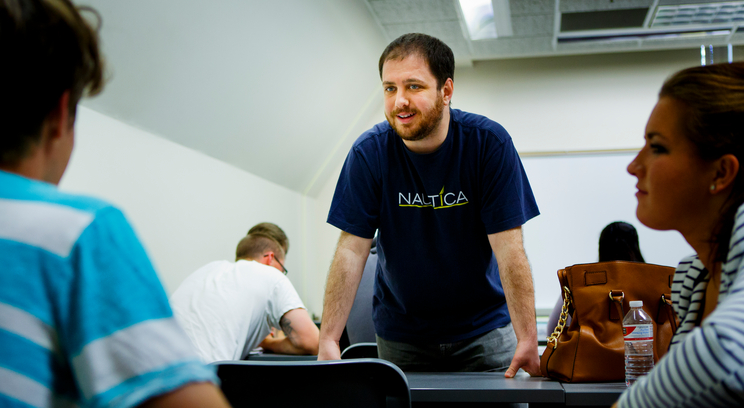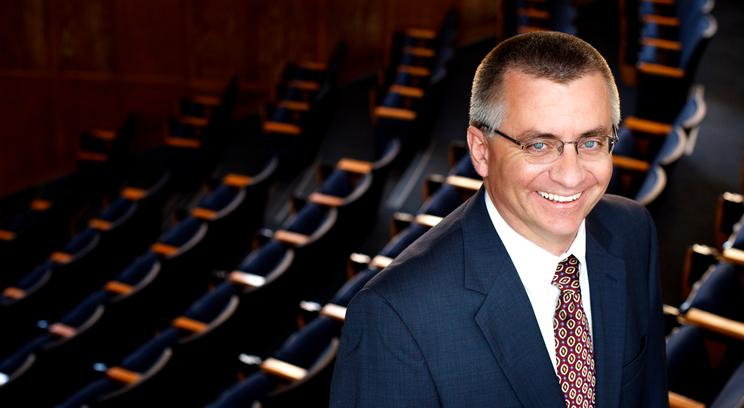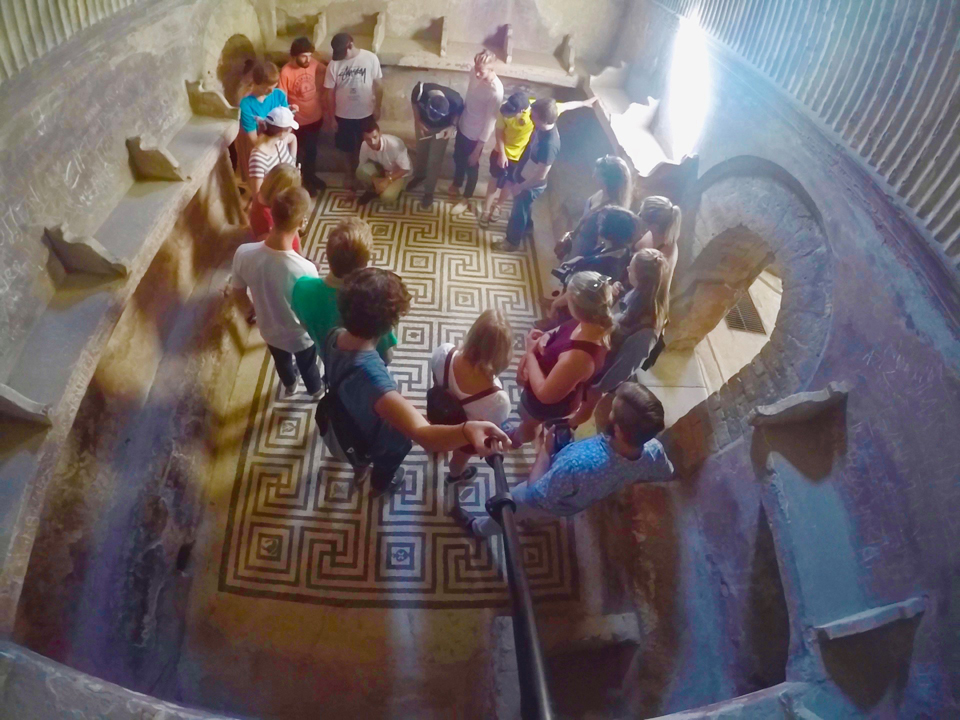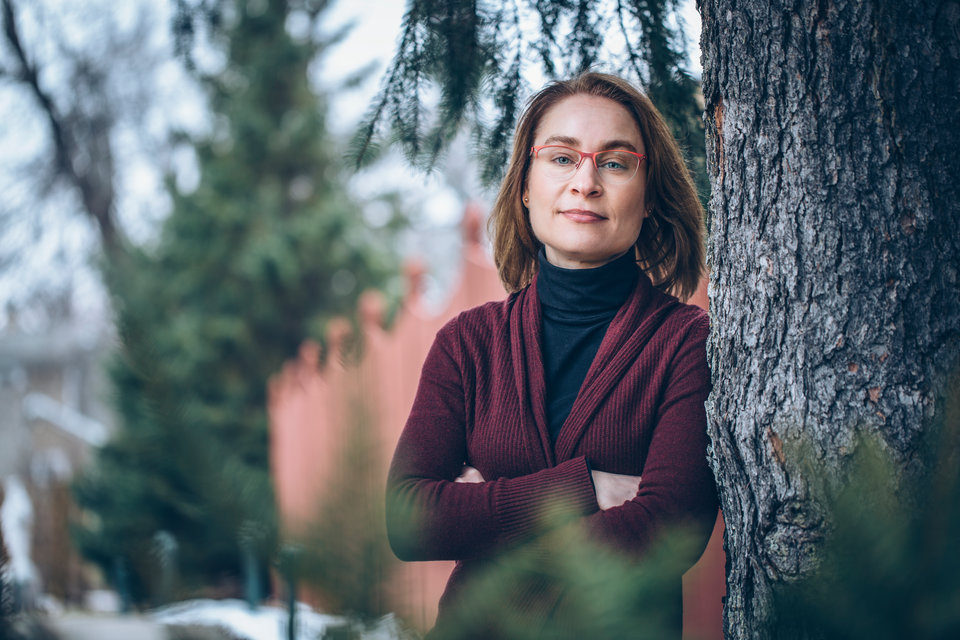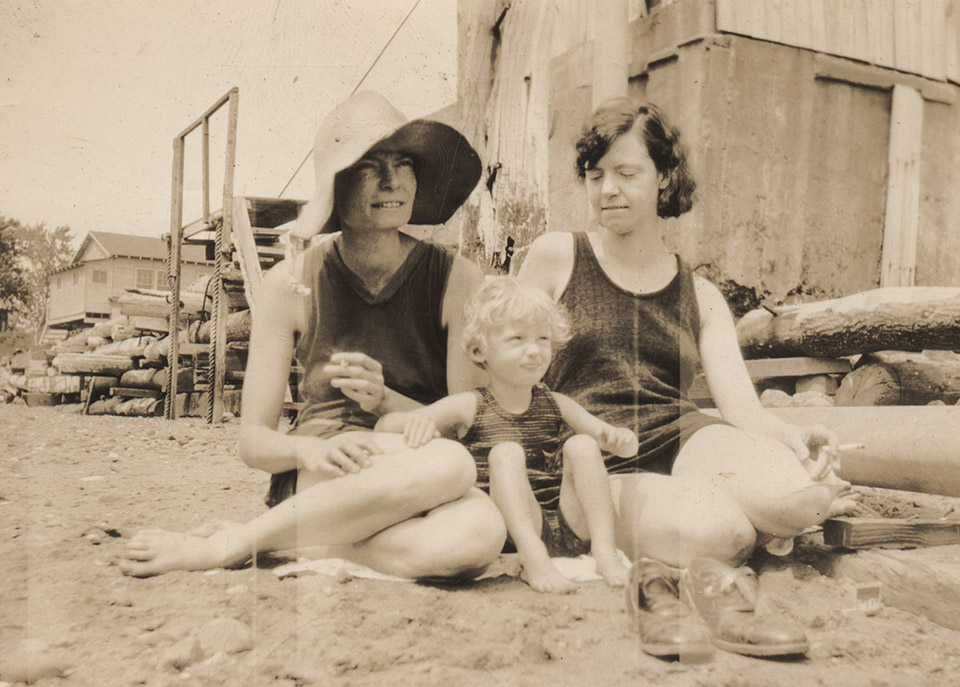History is among the oldest programs of study at the University of St. Thomas – our first collegiate catalog (1888-1889) lists history among its offerings – but today it seems to be one of the newest, too. In just a few short years, we internationalized our History Department by hiring a core of new full-time faculty who come from the best doctoral programs in the country and who specialize in areas of the world such as the Middle East, East Asia, Eastern Europe, Latin America and the Atlantic World, as well as the United States and Western Europe. We expanded our core curriculum offerings and refocused our efforts in teaching critical thinking skills for all learners. We revised our major curriculum so that it better serves students who want to pursue a history-related career or complement another major. We also made it easier for students to minor in history for personal or professional enrichment.
Please meet today’s historians and learn what they hope to accomplish in their classrooms and in their research.
How is teaching history different today from when you arrived at St. Thomas?
Anne Klejment: My first year at St. Thomas was 1983. Thirty years ago, professors lectured for the entire class period, while students took copious notes. Essay exams and quizzes were the preferred way to evaluate students. History focused on political events as the framework for understanding the past. Today, history textbooks tend to start with social history, focusing on the experiences of ordinary people of the past, gradually weaving political, social and economic developments into the narrative.
In today’s classroom, you will find much more discussion than 30 years ago. Professors use interactive slide, audio and video presentations to better engage learners. They want their students to know how to analyze and interpret primary source materials (historical documents and artifacts of the period under investigation) and to evaluate historical research writing so that they can become informed consumers of historical information. Today’s historians also want their students to understand how global events have shaped a particular part of the world like the United States and how an event in one part of the world impacts the rest of the world.
If the teaching of history has changed over the last 30 years, have the students who come to UST changed, too?
Tom Mega: The most obvious answer to your question is that there are a lot more students enrolled in St. Thomas today than 30 years ago. When I first arrived at UST (then, the College of St. Thomas) in the spring of 1983, it was a college with about 2,500 students. Today, it is a vibrant university with approximately 6,300 undergraduates and nearly 4,000 graduate students.
My first impression of St. Thomas students in 1983 was that they were friendly, committed to getting the most from their college experience, and willing to put up with a "rookie" teacher. I think I would describe today’s students in much the same way. One thing that has changed is that we have a much more diverse student body today. For example, we have seen a rise in the number of first-generation college students and students of color, and, in recent years, an increasing number of international students. This diversity is a good thing, because it more closely reflects the world that we live in, and because these students bring fresh perspectives to the classroom. Faculty are challenged to think in new ways about how they teach their courses, and students encounter views of the world that are quite different from their own. Everyone benefits!
With today’s computers and smart phones, historical information is available at the click of a button. Do students really need to study history anymore?
David Williard: Many people think history is just about memorizing facts, but I want my students to learn to think critically about why people – whether presidents or ordinary, run-of-the-mill citizens – made the choices they did by paying careful attention to the economic, cultural, social and political dimensions of the world in which they lived. In so doing, my students can begin to see the past as a complex relationship between broader societal influences and individual choices. Since this same dynamic affects our lives today, I hope they will become more reflective about the way they relate to their current world. If they leave my courses recognizing that we cannot make informed, meaningful choices without understanding the context of our own lives and society, and have some grasp of how we can do this, then my students will have met my most important learning goal.
History professors often talk about the importance of writing, but isn’t it just a lot of work?
Ann Brodeur: Writing for a history course is hard work! We place a lot of emphasis on training students not only to write beautifully but also thoughtfully. Students in our courses practice the science of engaging historical evidence and the art of crafting a compelling, logical argument based on that evidence. For me, there’s nothing more exciting than seeing students work hard to interpret evidence and express their ideas in writing, and then finally experience the real joy and reward of a well-earned "A." More importantly, learning to analyze evidence to solve problems and write clearly and thoughtfully are essential skills for whatever you do in life.
As an archeologist and professor of ancient history, what have you loved most about your work and what challenges do you face?
Vanca Schrunk: As an archeologist and teacher, I share the joy of descending with students to 20 feet or more below the streets of present-day Rome and stepping on the cobblestones of the imperial metropolis, or gazing at the tomb of St. Peter. In a collaborative project, we share the excitement of digging up floors and walls, pottery shards and lost coins of a once vibrant Roman rural estate on a small Adriatic island off the coast of Croatia. The challenges come when we attempt to interpret ancient behavior and ideas from the fragments of material remains and texts. The full, complete narrative is unattainable, yet we learn that the ancient worlds were diverse, connected and human, just like our own.
Professors are always doing research in addition to their teaching. What are you currently working on?
Zsolt Nagy: I am currently revising my dissertation for publication. My manuscript is tentatively titled Grand Delusions: Interwar Hungarian Cultural Diplomacy, 1918-1941. It looks at the development of Hungarian cultural diplomacy in the period between World War I and World War II. After the First World War, the victorious Allies granted 71.5 percent of Hungary’s territory to its neighbors. In order to re-establish itself as a proper European nation and to gain invaluable international support for its foreign policy aims, the Hungarian political elite devised an all-encompassing cultural diplomatic campaign. In cooperation with the country’s intellectual and industrial elite, they mobilized and deployed the country’s cultural capital – real and imagined – in order to influence international public opinion. My book examines this campaign as it unfolds in three areas: academia, the tourist industry, and motion picture and radio production.
My second project is a biography of a fascinating Jewish- Hungarian-American woman, Rosika Schwimmer. Her life story, with its connections to major events and personalities of the first half of the 20th century, is remarkable in and of itself, yet this project would allow me to gain insight into the issues and problems associated with ideas of gender, feminism and pacifism on both sides of the Atlantic.
You are a British historian, but you teach world history. How does that work?
Kelly Donahue: Within the last 20 years or so, the scope of British history has expanded exponentially. It is no longer just the history of a small island off the northern coast of Europe. It is the history of the largest empire in the history of the world. That old saying, "The sun never sets on the British Empire," was fact until after World War II. From North and South America, to Europe, to the Middle East, to huge swaths of sub-Saharan Africa, to the Indian subcontinent, to parts of China, all the way to Australia, Britain had a hand in shaping the modern world. I sometimes joke with students that if you want to understand why the world is so messed up look no further than the British Empire. From my point of view, in order to understand the world we live in, one must learn about the history of this tiny island, its vast empire, and how the two shaped each other.
You teach about Latin America and the Atlantic World. How do you help students become more comfortable with unfamiliar cultures?
Kari Zimmerman: I rely on a variety of primary sources (historical documents and artifacts of the time) to introduce students to an unfamiliar culture. Reading about a particular place or society in the first person highlights both similarities and differences with the students’ own experience. It also creates a direct connection to the unknown.
This was exactly how I became interested in the history of the Atlantic World. After reviewing the personal account of a female abolitionist in 19th-century Brazil, I realized that she sounded very similar to the women advocating for the end of slavery in the United States during the same period; however, her arguments also revealed particular nuances to Brazilian culture. I was struck by how she described slavery within a very different social reality where racial lines and relationships were quite blurred.
By asking my students to start with their individual, and informal, impressions of primary materials I open a dialogue about how different societies are interconnected throughout the Atlantic World. Analyzing primary sources together as a class also helps give students the confidence to understand how history is written, how assumptions are made, and how we might better appreciate the link between divergent pasts and modern global exchange.
Why did you want to teach East Asian history at UST?
Patti Kameya: I was attracted to UST because of its urban, cosmopolitan location and its commitment to the humanities and social sciences as a foundational part of intellectual life. When I saw Sriracha sauce at Scooter’s, I knew there was potential for interest in Asian history here because it demonstrates a visible Asian community and interest in Asian food. The humanities and social sciences provide the content and skills to link familiar with unfamiliar societies. I am hoping I can help students make connections between the Sriracha sauce at Scooter’s to events such as the Vietnam War and the broader historical trends such as globalization that make up the world we see every day.
Why study the history of the Middle East or any other part of the world? Students might say these faraway places don’t really affect them.
Hasan Karatas: The benefits of studying history of the Middle East ranges from gaining a better perspective on the relationship between the United States and the Middle Eastern countries to re-evaluation of our energy and foreign policies. But I believe the most significant outcome of the study of the Middle Eastern history is a greater understanding of ourselves. We as human beings most often tend to dehumanize the people who are not like ourselves. It is an instinct that exists in all of us in varying degrees and gives us the illusion of safety. This instinct automatically takes over, especially when those people are separated from us by time, geographical distance and culture.
By offering courses on Middle Eastern, East Asian, Eastern European and Atlantic World histories, our department aims to examine our tendency to dehumanize the societies of the past or of distant regions by underlining their respective historical contexts. In this way we hope to make clearer the link between us and them and underline the common humanity in all of us. For example, I always tell the story of Muslims encountering the Greek philosophy in the ninth century. Instead of outright denial as the work of pagans, Muslim scholars embraced and challenged the ideas of the Greek philosophers because they were confident in their own values. We come across different perspectives almost every day in our lives. If we are confident in our values, why be scared of those who are different from ourselves and shut down our minds? We are all richer for learning about our connectedness to others.
Read more from CAS Spotlight.
